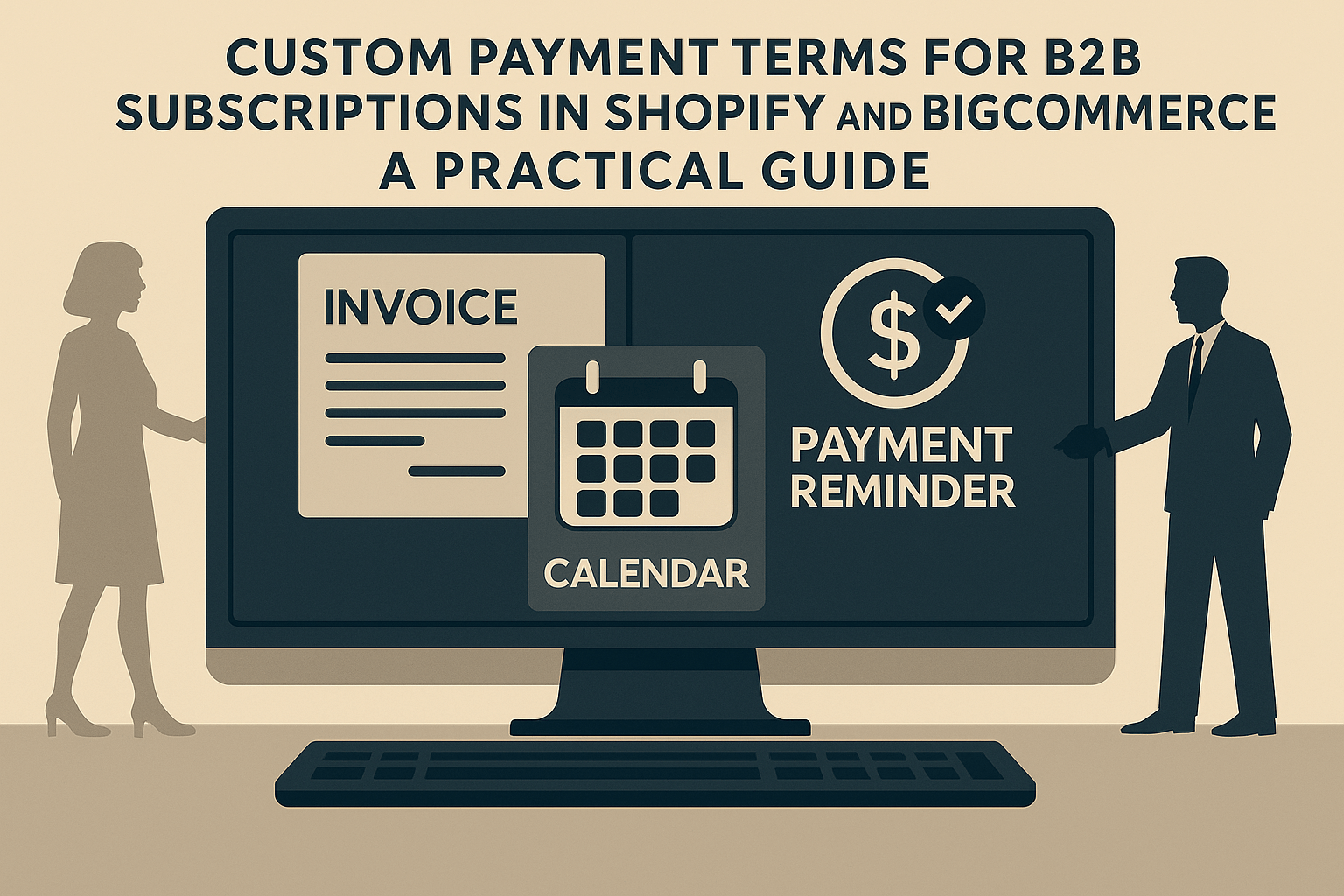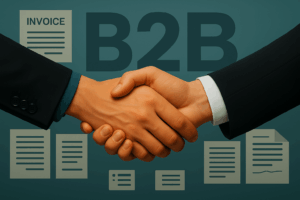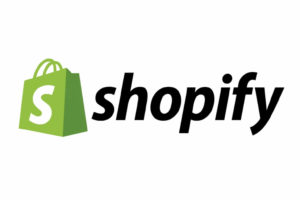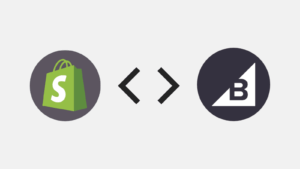Where Subscription Logic Collides with B2B Reality
The rise of B2B subscriptions has changed how industrial products are bought and sold. From replenishing chemical drums every 60 days to delivering OEM replacement kits on a 90-day maintenance cycle, recurring orders are now a core revenue stream for suppliers and an operational necessity for buyers.
But there’s one major problem: the subscription billing model baked into most ecommerce platforms, including Shopify Plus, is built for consumers, not businesses. It assumes credit card payments, automatic charges, and single-user workflows. That’s fine for a vitamin delivery or razor blade subscription. But it breaks the moment your customer asks,
“Can we put this on net-30 terms?”
This is where the subscription logic clashes with the realities of B2B finance.
Most industrial buyers aren’t paying with a credit card. They’re paying with POs, net terms, or negotiated invoice agreements. Their finance teams expect itemized billing. Their procurement teams expect visibility. Their AP departments expect time to approve and reconcile before sending payment.
And your e-commerce system? It doesn’t know what to do.
What should be a frictionless, recurring relationship turns into a manual process of support tickets, invoicing delays, and payment errors. Cash flow becomes unpredictable. Trust erodes. And in many cases, the subscription gets canceled, not because of product failure, but because of payment misalignment.
This article is your blueprint for fixing that.
We’ll show you how to implement flexible, credit-friendly payment terms inside subscription flows on Shopify Plus or BigCommerce. You’ll learn how to decouple billing from fulfillment, sync payment logic across ERP systems, and automate net-30/60/90 terms—without sacrificing cash flow control.
Because if you want to sell like a SaaS company but serve like an industrial partner, you need infrastructure that does both.
Why Native Subscription Tools Fail for Net Terms
Most subscription platforms, even the ones integrated into Shopify Plus were built with one assumption in mind: every order is prepaid.
Recharge, Bold Subscriptions, and similar tools all follow a consumer-first billing model. The system charges the buyer’s card automatically, generates the order, and sends it off for fulfillment. It works excellent for direct-to-consumer brands shipping coffee or skincare. However, when a B2B customer requests an invoice with net-30 terms instead of upfront payment, the system comes to a complete standstill.
And it’s not just an inconvenience; it’s a dealbreaker.
In the industrial world, credit terms are the norm. Procurement teams don’t operate on card payments. They issue POs. They expect invoicing that aligns with accounting cycles. Finance teams need to match deliveries with contract terms, allocate costs by job site, and reconcile invoices with actual usage. None of that fits the logic of a consumer-grade subscription app.
Here’s what breaks down:
- No support for deferred payment terms. The system can’t issue an order without charging the card. That means no net-30/60/90 flexibility, no delayed billing, and no payment on invoice.
- No PO or contract reference fields. Most tools don’t support adding PO numbers or project codes—standard requirements in B2B workflows.
- No separation between billing and fulfillment. In industrial commerce, a shipment may go out today, but billing is handled in a different system, on a different schedule. Subscription apps can’t handle that divergence.
- No ERP sync for invoicing or AR. Shopify handles ecommerce, but most financial data lives in NetSuite, QuickBooks, or Microsoft Dynamics. Without a bridge, your team ends up reconciling orders manually.
- No visibility for buyers. Industrial buyers need a portal where they can view upcoming charges, download invoices, and track what’s outstanding—not just get a “your card has been charged” email.
The result? Friction, confusion, and churn.
Instead of enabling smoother repeat sales, your subscription model becomes a liability. Your sales team fields complaints from AP. Your support team issues manual invoices. And your cash flow gets bumpy because the system was never built for how industrial buyers actually pay.
If you are serious to scaling B2B subscriptions, it would be beneficial to reconsider the architecture rather than merely addressing the symptoms.
What B2B Buyers Expect from Subscription Billing
If you’re offering subscriptions to industrial customers, understand this: you’re not just delivering product on a schedule. You’re becoming part of their financial workflow.
B2B buyers operate within rigid procurement processes. They engage in more than just swiping a card and moving on; they coordinate across teams, monitor budgets, and respond to accounts payable. When subscriptions don’t respect those realities, they don’t feel like automation—they feel like risk.
So what do B2B buyers actually expect from a subscription billing experience?
1. Payment Flexibility that Reflects Real-World Terms
Buyers expect the ability to pay on net-30, net-60, or even net-90 terms, not through a workaround, but as a first-class billing option. They want subscriptions that align with how their company pays vendors, not systems that force credit card behavior into a credit-based environment.
2. Support for POs, Job Codes, and Internal Reference Fields
Every invoice needs to map to an internal code: a PO number, a job site, or a project phase. If your system doesn’t allow that input, you’re making reconciliation difficult and introducing delays that directly affect payment timing.
3. Clear Separation Between Fulfillment and Billing
Buyers understand that shipments and payments are different processes. A product might need to arrive on a construction site tomorrow, while the invoice gets reviewed and paid 30 days later. Your system needs to reflect that reality without forcing workarounds.
4. Centralized Visibility Across Accounts
Procurement managers need to see everything: open invoices, past shipments, upcoming deliveries, and payment status. They expect to manage all of this without calling your accounting team every month. If your system can’t show this in one portal, they’ll see it as immature and look elsewhere.
5. Proactive Communication
Buyers want to know what’s coming before it hits AP. They expect reminders about upcoming charges, downloadable invoices, and a clear digital trail. Surprises are the enemy of cash flow and the quickest way to kill a subscription.
Simply, your billing logic needs to be as buyer-centric as your product offering. If you force credit card workflows on customers who manage payment cycles by the quarter, you’ll lose them, not because the product failed, but because the system never respected how they buy.
And the good news? You can fix it. It just takes rethinking how Shopify Plus handles payment triggers, customer segmentation, and financial data.
Building a Custom Net Terms Subscription Stack in Shopify Plus
Building B2B subscriptions that truly function requires a comprehensive rethinking of the architecture. That doesn’t mean tearing Shopify Plus apart; it means layering the right logic around it. Specifically, you need to decouple billing from fulfillment, respect payment terms at the account level, and sync those terms across your ERP, invoicing, and customer-facing portal.
A. Decouple Billing from Fulfillment
In standard subscription logic, an order is created and charged immediately. But in B2B, fulfillment needs to happen now while billing happens later. That’s the first architectural change.
Your system should:
- Let a subscription trigger order creation without triggering immediate payment.
- Capture the billing terms (net-30, net-60) at the customer level.
- Push the order and payment data into your ERP or accounting system (like NetSuite, QuickBooks, or SAP).
- Delay invoicing or payment capture until the due date—or send the invoice immediately with a due date attached.
In Shopify, this means disabling auto-capture and routing orders through middleware that can handle subscription logic and billing delay workflows independently.
B. Use Customer Groups + Metafields to Store Payment Terms
Every buyer needs a profile that reflects their payment relationship with you. Shopify’s customer groups and metafields give you the structure to store:
- Payment term (net-30, net-60, due on receipt)
- Default PO requirement (yes/no)
- Contracted pricing tier
- Assigned account rep or internal approver
These fields can be pulled into your checkout logic, order objects, and ERP so that every order generated by a subscription reflects the correct terms without human intervention.
C. Automate Invoice Generation Through ERP Integration
Once an order is triggered via the subscription, your ERP should take over invoice generation. This allows you to:
- Apply payment terms and PO numbers automatically
- Push the invoice to the correct AP contact on file
- Create aging reports and AR tracking that reflect true B2B expectations
This step is where most subscription tools fail—they expect to be the source of truth for payment. However, in industrial B2B, your ERP plays a pivotal role in invoicing and collections. The goal is to have Shopify generate the order, then let the ERP do what it does best.
D. Build a Self-Service Buyer Portal for Visibility and Trust
A B2B subscription system doesn’t just need logic, it needs transparency. Your buyers need a place where they can:
- View upcoming scheduled orders
- Download historical invoices
- Track payment due dates and invoice status
- Update billing contacts or PO preferences
- Manage subscriptions without breaking their terms
This can be custom-built on top of Shopify using customer-authenticated dashboards or integrated into your headless frontend if you’re operating decoupled.
When buyers can see what’s happening, trust increases. When the system reflects their existing operations—invoice first, payment later—buyers are more likely to remain engaged.
This stack isn’t theoretical. It’s already being deployed by industrial brands that have outgrown consumer-first tools. The outcome: smoother subscription renewals, faster collections, and B2B buyers who actually want to stay on autopilot.
Implementing Custom Net Terms Subscription Architecture in BigCommerce
If Shopify Plus requires workarounds to support net-term logic in subscriptions, BigCommerce takes a different approach entirely. It doesn’t try to force native subscription logic on you—it gives you a flexible API-first foundation to build the system you actually need. That’s a major advantage when your buyers expect invoicing, POs, and payment on their terms—not the platform’s.
BigCommerce doesn’t come with a built-in subscription engine. But that’s not a weakness. It’s the reason it works better for complex B2B workflows. You’re not limited by consumer-grade assumptions. You’re free to architect around your real billing needs—especially when you layer in third-party billing logic, ERP integration, and customer group segmentation.
Decouple Subscription Billing from Checkout Constraints
In BigCommerce, you can separate subscription behavior from payment behavior at the architectural level. With tools like Rebillia, Ordergroove, or custom webhook-triggered flows, a subscription event doesn’t have to mean “charge the card now.” It can simply mean “generate a new order, then push it to the ERP with this buyer’s billing terms.”
This is critical for industrial accounts that run on net-30, net-60, or contractually defined terms. The buyer can trigger a recurring replenishment on a fixed cadence—say, every 90 days—but the actual invoice and payment cycle happens downstream, where your AR logic lives. BigCommerce isn’t fighting that flow. It’s built to support it.
Use Customer Groups and Price Lists to Store Payment Logic
Unlike Shopify, which requires metafields and custom logic to store buyer-specific data, BigCommerce allows you to natively assign payment behaviors to customer groups. This means you can categorize your buyers based on the following criteria:
- Payment term (net-30, net-60, prepaid)
- Purchase order requirement
- Contracted pricing or discounts
- Required approver or buyer role
- Default ship-to or job code references
Each group gets its own pricing, invoice behavior, and even checkout configuration. You need to structure the account the way the buyer’s AP team already thinks.
Sync Invoices and POs Through ERP Middleware
BigCommerce excels when it eliminates the need for internal invoice or AR management. It’s not pretending to be your finance stack. Instead, it plays nicely with ERP systems like NetSuite, SAP, QuickBooks, or Acumatica—especially through integration layers like Celigo, Patchworks, or custom middleware.
Once a subscription-triggered order is created, the logic flows like this:
- The order gets tagged with the customer’s payment terms and PO number (captured at checkout or stored on file)
- The ERP ingests the order and generates an invoice with full payment conditions
- AP is notified via automated workflow
- Payments are tracked and reconciled at the ERP level, not in BigCommerce
This approach keeps the ecommerce front end clean while letting your financial systems do what they do best.
Build a Self-Service Subscription and Billing Portal
You don’t need to bolt on clunky apps or force buyers into support tickets. With Stencil (BigCommerce’s templating engine) or a headless front end, you can build a customer portal that mirrors the buyer’s internal workflow:
- Technicians can view and edit subscription quantities or frequency
- Procurement leads can approve changes, upload POs, or pause deliveries
- Finance teams can access invoices, check payment status, and download order history
- Account managers can see everything from a dashboard without calling finance
If you’re running a headless storefront (using a frontend like Vue, React, or Next.js), this experience can be fully custom, designed around how your buyers think, not how BigCommerce’s admin panel works. That means one login, one dashboard, and no excuses.
Why BigCommerce Works for Complex Subscription Billing
BigCommerce isn’t trying to be your billing system. It’s trying to be your commerce engine. That makes it ideal for subscription models that involve
- Split workflows between fulfillment and invoicing
- Multi-role customer permissions
- Embedded credit rules and internal approval logic
- Recurring shipments with dynamic pricing or usage-based triggers
- ERP-synced invoice tracking and aging reports
Where Shopify gives you flexibility through apps and overrides, BigCommerce gives you control through clean data architecture and open APIs.
If your subscription logic is deeply tied to contracts, job sites, cost centers, and quarterly budget cycles, this is the platform that won’t get in your way.
Integrating Credit Workflows and Approvals
In consumer ecommerce, the buyer is the approver. The process involves a single click, a single card, and a single transaction.
In B2B, that simplicity doesn’t exist. The person initiating a subscription is rarely the one responsible for paying the invoice. Internal hierarchies, purchase thresholds, and approval chains are baked into how industrial organizations buy. If your subscription system doesn’t accommodate that complexity, it creates friction, and friction kills retention.
Whether you’re building on Shopify Plus or BigCommerce, your infrastructure needs to reflect how your buyers operate internally, not just how your platform processes payments.
Role-Based Access: Define Who Can Do What
Your subscription portal or account dashboard must support role segmentation, regardless of platform:
- Technicians initiate or adjust subscriptions, especially for field-replaceable consumables.
- Procurement leads approve changes, manage schedules, and enforce quantity limits.
- Finance/AP teams view invoices, track due dates, and reconcile PO requirements.
Shopify Plus doesn’t support multi-user roles natively, but with custom tags, customer metafields, and Liquid logic (or a headless front end), you can simulate multi-role behavior.
BigCommerce, especially in a headless or Stencil-extended architecture, lets you design custom roles and dashboards directly, with customer groups and session-level permissions.
Approval Routing Based on Value or Frequency
High-value or high-frequency subscriptions should trigger approval workflows—automatically.
Examples include
- Changes over $1,000 route to procurement
- Updates to PO fields or job site references route to finance
- Frequency increases (e.g., monthly to weekly) flag for manual review
On Shopify, these triggers can be handled via middleware or tools like Shopify Flow paired with metafield conditions.
On BigCommerce, you can build the same logic using custom webhooks and integrate with external CRMs or approval platforms (like Salesforce or Netsuite workflows).
PO Upload and Reference Management
Both platforms can accommodate PO logic, but not by default.
You’ll need to build or embed functionality that allows buyers to:
- Upload or enter a PO during subscription setup
- Add internal job codes, billing references, or cost centers
- Attach any required supporting documentation
In Shopify, this often lives in a custom checkout field, post-purchase app layer, or buyer portal.
In BigCommerce, it can be embedded directly into the account dashboard or checkout flow using custom form fields or API hooks.
Notification Logic and Escalations
Keep subscriptions moving with a proactive communication layer that:
- Notifies approvers when an action needs review
- Reminds buyers of shipments pending approval
- Escalates after X days of inactivity—e.g., notify account rep or send internal alert via Slack/CRM
These workflows can run through your email automation engine (e.g., Klaviyo, HubSpot) or via direct ERP/CRM triggers. The platform doesn’t matter as much here, it’s about connecting the approval logic to real buyer behavior.
By integrating credit workflows and multi-role approvals into your subscription infrastructure—whether on Shopify or BigCommerce—you reduce churn, eliminate manual friction, and make it easier for high-value enterprise buyers to say “yes” and stay on contract.
| Feature | Shopify Plus | BigCommerce |
| Native subscription engine | Requires Recharge, Bold, etc. | Requires third-party or custom logic |
| Net terms logic | Via metafields + Flow + middleware | Via customer groups + ERP integration |
| PO field support | Custom fields or post-checkout middleware | Direct form integration or dashboard |
| Role-based dashboard access | Needs custom tags or headless UX layer | Easier to implement via Stencil/headless |
| ERP integration depth | Works with apps (e.g., Celigo, Pipe17) | Stronger out-of-the-box API flexibility |
| Approval routing | Shopify Flow + 3rd-party approval apps | Easier webhook integration with CRMs |
Risks to Avoid When Implementing Custom Terms
Adding net-30, net-60, or PO-based workflows to your subscription model can unlock major advantages, but only if implemented with care. Too often, suppliers jump straight into customization without accounting for operational edge cases, financial system misalignment, or real-world buyer expectations.
Here are the most common pitfalls that derail B2B subscription models, whether you’re building on Shopify Plus, BigCommerce, or a custom stack.
1. Mismatched Order and ERP Data Across Platforms
If your subscription engine generates an order, but your ERP fails to match the correct payment terms, purchase order, or invoice logic, it can lead to billing errors, payment delays, and complex reconciliation issues.
Avoid this by:
- Syncing subscription data (terms, PO, billing contact) from Shopify or BigCommerce to your ERP at the moment of order generation.
- Using consistent, traceable order identifiers across both systems.
- Establishing system-of-record clarity: your ecommerce platform governs product logic; your ERP governs payment enforcement.
2. Charging Net-Term Buyers Like Credit Card Customers
This is the trust-killer. If your billing engine auto-charges a card for a buyer who expects net-30 invoices, you’ve just broken their procurement policy, and probably lost the renewal.
Avoid this by
- Using Shopify customer metafields or BigCommerce customer groups to segment billing logic based on account type.
- Applying conditional logic at the subscription trigger level to determine whether to auto-charge or route to AR.
- Testing new workflows with high-value buyers before rolling them out platform-wide.
3. No Buyer Visibility or Self-Service Portal
Without a portal, your buyers are blind. If they can’t view invoices, check upcoming deliveries, or manage subscriptions, they’ll flood your support inbox—or worse, churn silently.
Avoid this by
- Building a secure portal on Shopify (via headless/custom app) or on BigCommerce using Stencil or a decoupled frontend.
- Giving procurement and finance access to what they care about: invoices, due dates, PO references, and service history.
- Creating self-service flows that don’t break your approval or payment logic.
4. Overcomplicating the User Experience
Complexity isn’t the goal. You’re not building a billing tool for your dev team—you’re building one for a procurement manager juggling vendors, cost centers, and deadlines.
Avoid this by
- Designing flows that match how your buyers already operate—approval layers, PO logic, job codes.
- Keeping interfaces intuitive: editable subscription fields, clear invoice history, and fast support access.
- Offering white-glove onboarding or guided account setup for your top buyers.
5. Ignoring the Financial Risks of Extending Credit
Net terms are not a feature—they’re a financing structure. If your subscription system makes it easy to ship and hard to collect, you’re not automating success—you’re automating risk.
Avoid this by
- Looping in your finance team before launch—not after AR issues surface.
- Establishing credit thresholds and controls for new subscription buyers.
- Monitoring aging reports and sending automated invoice reminders before terms expire—regardless of platform.
Whether you’re on Shopify or BigCommerce, the architecture matters. But so does the discipline.
Net terms can build loyalty, reduce churn, and grow contract value—but only if your system respects both your buyer’s process and your financial guardrails.
A New Advantage—Flexible Terms Without Losing Cash Flow Control
Ecommerce leaders have been under the impression for years that recurring revenue and predictable cash flow are inseparable. But in B2B, especially industrial, wholesale, or OEM verticals, predictability isn’t about auto-charging a card. It’s about honoring customer payment terms without turning your finance team into a billing help desk.
The good news? You don’t have to choose between offering net terms and protecting your bottom line. When architected correctly, your subscription system, on Shopify Plus, BigCommerce, or a custom stack, can do both.
You Gain Control, Not Chaos
By decoupling billing from fulfillment and automating invoice generation via your ERP, you maintain oversight at every stage:
- Orders are traceable across systems.
- Invoices are reconciled against actual shipments and POs.
- Payment cycles are enforced based on account rules—not reactive support emails.
There’s no more guesswork. Every subscription triggers a predictable set of actions, even when the cash hasn’t hit the bank yet.
You Build Trust at Scale
Buyers don’t just want flexibility; they want professionalism. When they see you offering net-30/60/90 terms through a clean, modern interface, with invoice accuracy and approval logic baked in, you’re no longer just a vendor. You’re a supply chain partner who gets it.
And when those buyers don’t have to pick up the phone to check an invoice, pause a shipment, or update a PO, they stay subscribed longer.
You Future-Proof Revenue
As more B2B transactions shift online, subscriptions will continue to expand into industrial, wholesale, and MRO sectors. The companies that build flexible, payment-aware systems now will lead that shift.
You’re not just upgrading software—you’re redesigning infrastructure for sustainable growth.
So yes, net terms add complexity. But when implemented with the right stack, they unlock something rare in B2B ecommerce: a recurring revenue model that actually aligns with how your customers buy.
And when your payment system matches their procurement system? That’s when you stop selling and start retaining.
B2B Subscription Infrastructure Builder
Build Subscription Logic That Honors Net Terms, Supports PO Billing, and Scales Across Real Buyer Workflows
Designed for B2B brands running on Shopify Plus or BigCommerce, this toolkit turns recurring revenue from a support headache into a scalable, finance-synced engine. This toolkit provides industrial-strength logic to streamline the payment process for your buyers.
What It Helps You Do:
- Implement net-30/60/90 terms inside Shopify subscriptions without breaking fulfillment
- Sync customer payment rules across ERP, invoicing, and ecommerce
- Handle PO requirements, cost center codes, and role-based permissions
- Build trust with AP teams and procurement—not just operators
SECTION 1: Buyer Requirements Alignment Audit
Before you build custom logic, validate your model against real-world buyer expectations. Use this audit to align subscriptions with B2B payment behavior.
Can your current subscription infrastructure support
☐ Net-30, net-60, or net-90 payment terms?
☐ PO number entry during checkout or renewal?
☐ Job code/cost center tagging per invoice?
☐ Approval routing for large changes or new subscriptions?
☐ AP has access to downloadable invoices?
☐ Separation of fulfillment (ship now) vs. invoicing (pay later)?
☐ Invoice generation is triggered by ERP, not Shopify?
☐ Multi-role account access (Tech/Procurement/Finance)?
☐ Is there portal visibility for upcoming charges, invoice status, and order history?
Scoring:
- 8–9: You’re architected for scale; now optimize for UX and trust
- 5–7: You’re functional, but key buyers will feel the friction
- <5: You’re selling like a SaaS but billing like DTC, and it’s costing you revenue
SECTION 2: Subscription Logic Flowchart
A scalable B2B subscription stack needs to break traditional logic and rebuild it in the correct sequence.
Standard Flow (DTC Logic) → Not Viable for B2B
- Subscription triggers → Payment captured → Order fulfilled → Receipt sent
Corrected B2B Logic:
- Subscription triggers → Order created (no payment) → ERP receives order
→ Invoice generated w/ payment terms, PO code, and contact
→ Invoice sent to AP w/ net terms → Payment tracked via ERP → AR follow-up if overdue
☑ Tip: Consider the subscription to be an order generator, not a payment collector.
SECTION 3: Payment Terms & Customer Metafield Planner
Every account needs to carry structured payment metadata. Here’s how to plan it.
| Metafield Name | Type | Use Case | Example Value |
| payment_terms | Text (enum) | Controls invoice timing | Net-30 |
| requires_po | Boolean | Determines PO field requirement | true |
| billing_contact_email | Sends invoice + reminders | [email protected] | |
| contract_pricing_tier | Text | Custom pricing rules for account | Tier 2 |
| invoice_delivery_method | Enum | Email / API / PDF | |
| subscription_approver | Text (name/id) | Approval routing logic | [email protected] |
SECTION 4: ERP Sync & AR Readiness Grid
If your ERP can’t track payment terms or connect to subscription orders, the system breaks. Ensure your integration aligns with the following essential requirements.
| Data Element | Synced From Shopify? | Reflected in ERP? | Status |
| Order record w/ SKU + Qty | ☐ | ☐ | |
| PO number + job code | ☐ | ☐ | |
| Payment terms | ☐ | ☐ | |
| Invoice due date | ☐ | ☐ | |
| Subscription ID reference | ☐ | ☐ | |
| Invoice status (open/paid) | ☐ | ☐ |
☑ If any box is unchecked: billing risk increases.
SECTION 5: Role-Based Access Blueprint
Who sees what? Who approves what? B2B subscriptions only work if your system reflects buyer org charts.
| Role | Permissions | Portal Access Needs |
| Technician | Start/stop subscription, edit qty | See upcoming shipments, reorder links |
| Procurement Lead | Change delivery schedule, approve | See all open subscriptions |
| Finance/AP | Download invoices, update PO refs | View aging, payment status, due dates |
| Account Rep | See customer activity | Dashboard of customer terms |
SECTION 6: Risk Triggers & Exception Handling Matrix
Anticipate failure points before they hit AP, or your cash flow.
| Scenario | Risk | System Response |
| Buyer is auto-charged on card | Breaks terms | Pause flow + alert rep |
| No PO captured on renewal | Invoice rejected by AP | Trigger “PO required” fail-safe flow |
| Approver doesn’t respond in 48 hrs | Subscription stalled | Send escalation email + notify CRM owner |
| ERP fails to sync invoice | Manual billing required | Flag for finance team immediately |
| Subscription over ship-to limits | Internal credit risk | Route to credit approval workflow |
☑ Bonus: Build Slack alerts or CRM notes for your account managers.
Final Note: This Isn’t Just “Better Checkout.” It’s Embedded Trust.
Net terms aren’t just payment terms, they’re buyer’s psychology.
When a buyer sees PO references, delayed invoicing, and accurate payment windows baked into your system—not hacked together—they trust you. That trust leads to longer renewals, bigger contract values, and reduced churn.
You Can’t Scale Subscriptions Without Credit Terms
If you’re still managing B2B subscriptions with manual invoicing, disconnected ERPs, or workarounds that force buyers to call just to update a PO, you’re not scaling—you’re surviving.
The future of industrial ecommerce lies in recurring revenue models that respect how B2B buyers pay. That means automated billing on net-30/60/90 terms, PO-backed invoicing, and seamless synchronization with your ERP and customer roles. But getting there requires more than a subscription app—it requires architecture.
That’s where we come in.
Optimum7’s Subscription + Net Terms Diagnostic is designed for B2B brands selling via Shopify Plus or BigCommerce who want to:
- Migrate from card-only billing to flexible payment terms
- Automate invoice creation and approval workflows
- Connect Shopify, ERP, and finance logic into one seamless loop
- Build subscription infrastructure that actually fits your customers’ procurement process
Contact us. In one call, we’ll map your current stack, identify system gaps, and lay out a phased roadmap, so you can serve industrial buyers the way they want to buy, while keeping full control of cash flow.












